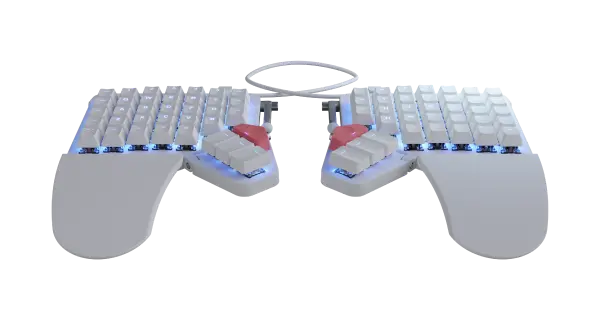The people who use our boards.
385 interviews since 2018
Alessandro
Melis
Machine Learning Engineer
Who are you, and what do you do? What do you like to do outside of work?
Hello, I'm Alessandro, a machine learning engineer from London, UK. I'm originally from Italy, but I moved for studying a long time ago and never went back. After a short period in academia, I pivoted to industry to work on computer vision for smart-cities applications and autonomous vehicles.
Time off work is spent going around London with my family. We've covered most of the Opinionated Guide to Kids' London and we have a PhD-level knowledge of the green spaces in South East London. When not on the move (i.e. after bedtime), I like to indulge in short chess games, code-golfing sessions, or adding features to one of my side projects.
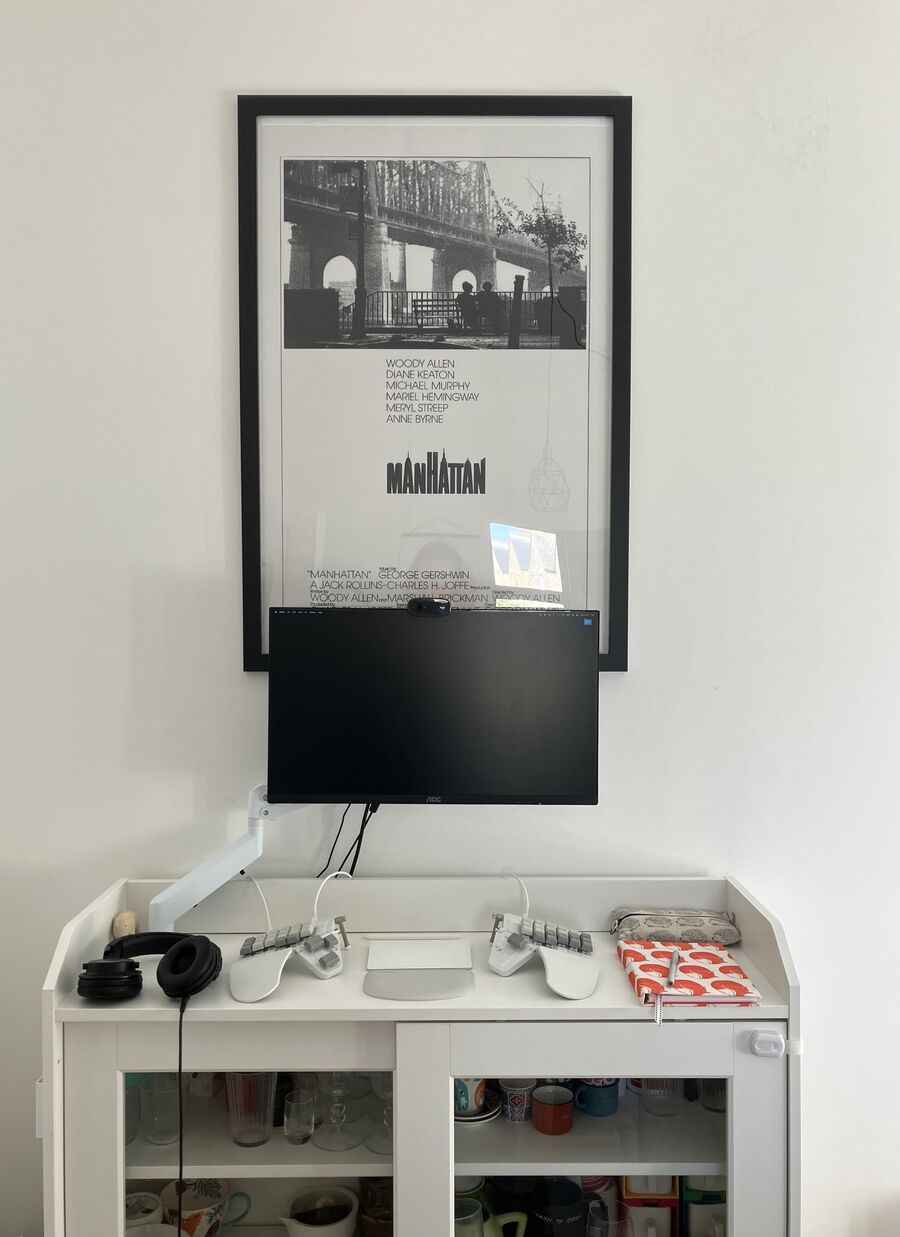
What hardware do you use?
Space is at a premium here in London, and I do not have a spare room for working. As a matter of fact, I do not even have an extra table to set my working equipment on. While looking around the house for an empty corner, I realised that I didn't need to buy a new table; the perfect working station was already in place.
I'm using our IKEA Hauga cabinet as a standing desk. The top side is deep enough to fit a notebook and, more importantly, at the perfect height for my forearm to be comfortable. My 24" AOC monitor is held by the Suptek Single Monitor Arm, for which I drilled a pass-through hole in the cabinet top. This being a standing-only desk, I tend to spend a lot of time on my feet. Hence, my working-from-home outfit includes a pair of comfy shoes, which I consider an important part of my setup.
There's no really space on the top of the counter for anything more than my Moonlander, a Magic Trackpad with a cushy wrist-rest, and a notebook (this was handcrafted by my sister using canvas from The Owlery print shop). I briefly toyed with the idea of having the computer inside the cabinet between mugs and plates. However, the logistics of moving the laptop around fragile items seemed complicated, and I ended up adding one more feature to the furniture.

I secured an under-desk laptop mount to the side of the cabinet to gently hold my laptop, a 13" 2017 MacBook Pro (still rocking!). All the peripherals (monitor, keyboard, USB camera) and power are passing through an Anker 555 USB-C Hub, using one of the laptop ports. The home setup is completed by the Audio-Technica M40x headphones, which I plug directly into the laptop.
When I’m commuting, most of the setup stays at home. I store the laptop and my notebook(s) and pens in a small backpack and swap the M40x for a pair of AirPods2. In the office, the hot-desking policy makes difficult to have a stable setup, but I still have to work out the best hardware arrangement, thus I rely on the laptop trackpad and keyboard to carry on.
Apart from the work hardware, I also have a small home-lab project in development. The main requirement is that it should be out-of-sight, as not everyone in my household likes to see a server rack in the middle of the living room...the design I came up with develops vertically, and it's concealed yet again in a piece of furniture.
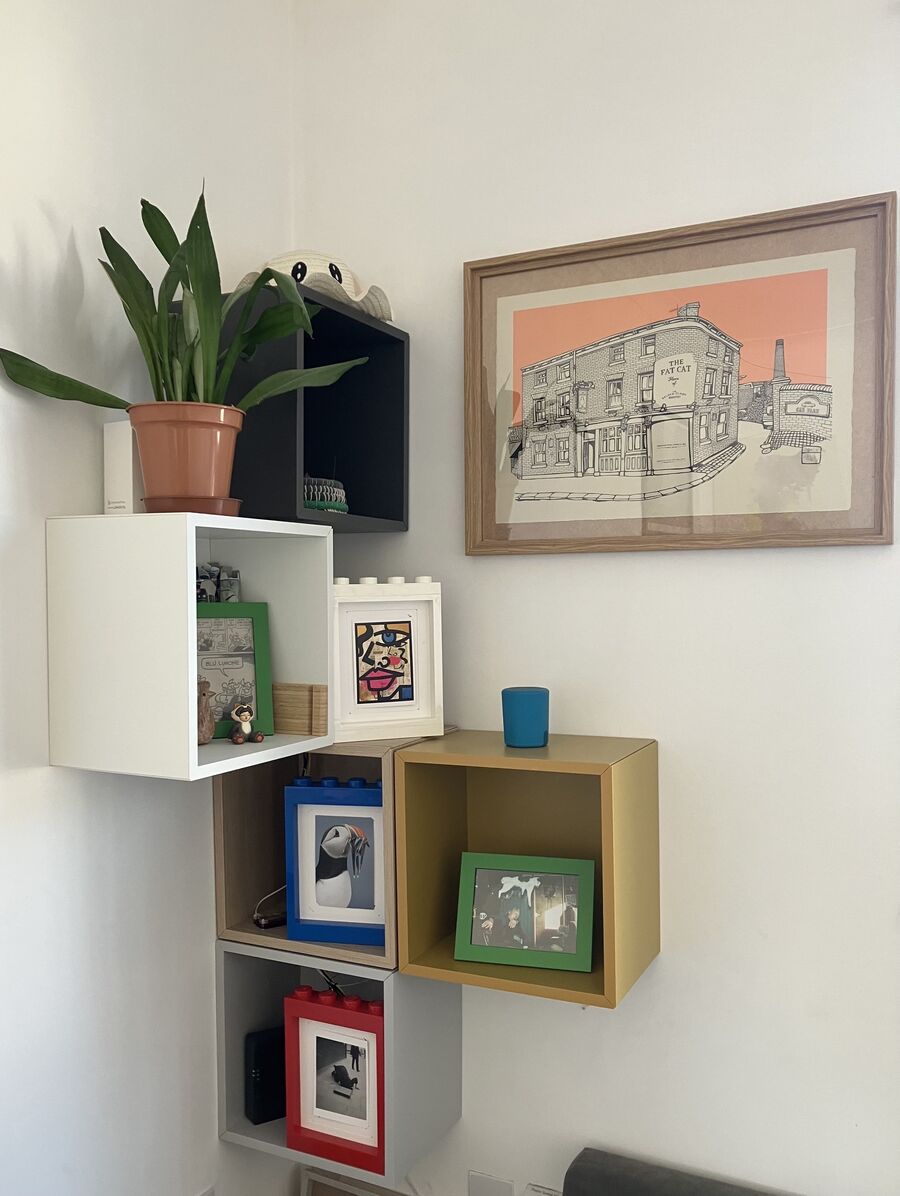
This is a mix of EKET cabinets purposely installed next to the optic fibre socket. The lower cube holds the modem, while the Wi-Fi access point is on the upper white one. Cables run across the cubes where I have two Raspberry Pis (a Zero 2W and a Pi4 model-B), and a Beelink Mini S12. All the PCs are connected to the LAN via a five-way Netgear switch.
And what software?
I like my MBP, but it's not designed for the computational load of modern deep learning pipelines. My workflow mainly consist in ssh'ing into much more powerful machines in the cloud, where I can access all the hardware needed for training and inference. Therefore, most of my time is spent in a terminal emulator with a Zsh shell. My current favourite is Kitty.
I don't customise my setup too much. I would rather learn the defaults than come up with a complex configuration. This is why I use vanilla Vim with only the fzf plugin for searching files. That fzf is also the one plugin I installed at shell level through oh my zsh (I like the default prompt styling too). Following this philosophy, lately I've been enjoying typing into Helix, a modal editor with good (and opinionated) defaults.
When outside the terminal, I use Sublime Text to open large text files, and Sublime Merge as my Git GUI. I'm not a big fan of IDEs, but I use Zed to play with agentic vibe-coding and GoLand for its great built-in debugger. I'm also trialing Obsidian for note-taking, but I don't feel ready to let go of pens and paper yet.
Nowadays I mainly code in Go and Python, but Julia is my to-go language for fun projects (e.g. Advent of Code and code-golf). I'm using uv a lot as Python package manager and Docker for containers.
The last bit of laptop setup is around system-level shortcuts. I'm slowly discovering all sort of features in Raycast (mostly the clipboard and scripts management) and Hammerspoon.
The home lab is currently running a Pi-hole server on the Zero 2W and a media centre stack — Jellyfin, Calibre, Navidrome, and Immich—on the mini PC. The pi4 is used for self-hosted experiments. Some of these are exposed to the wider web via Cloudflare zero-trust tunnels, e.g. my gif search engine asdfasdf.fyi (very proud of the inward-rolling URL).
What’s your keyboard setup like? Do you use a custom layout or custom keycaps?
For a long time, before the ortholinear-split enlightenment, I used a keyboard I assembled myself from a kit based on the HHKB layout using a Satan-GH60 board and QMK firmware. It's equipped with Zealio v1 tactile 62g switches (now re-released in a redux version) and plain XDA profile keycaps.
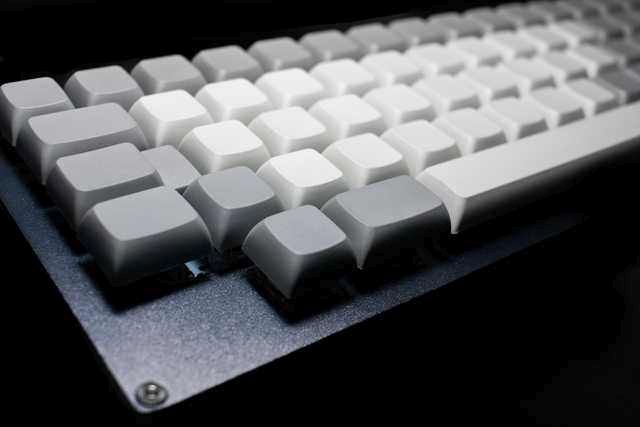
This served me well for a long time, as I managed to repair it several times with the help of the solder iron. However, I'm now full time on the Moonlander, which I modded a bit to my liking.
I installed new tactile switches (Zealio v1 again) and reused the same XDA profile keycaps, to which I also added some dampening O-rings. Then I started optimising my layout with the aim of minimising travel distance. This made me discover the Corne keyboard which, although a bit extreme for me, helped in shaping my current layout.
Once I realised that some of the keys were not used, I decided to remove their switches and cover holes with some 3D-printed caps.
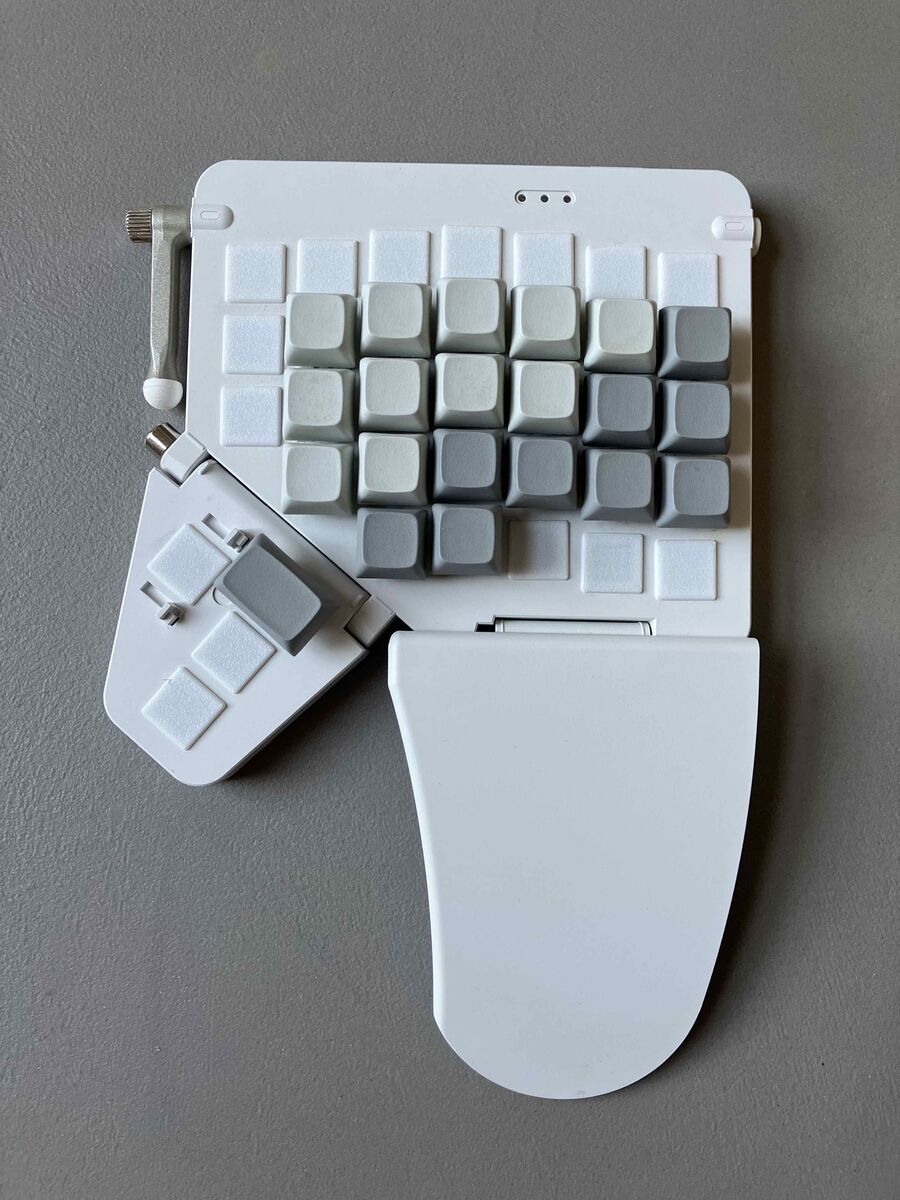
I believe there's room for improvements here. I'd love to also remove the innermost columns and get down to a 3x5 layout, but it needs more experimentation with home-row mods, something I still need to get used to.
What would be your dream setup?
Well, where shall I start?
For as much I like my standing desk, I'd like to be able to sit while writing notes or trying to focus on bits of code. A drastic furniture reshuffle may provide some room for a sit-stand desk and one of those fancy office chairs. This is unlikely to happen, and it's okay. The latest episodes of daydreaming brought me to the opposite direction: What if I could get rid of a desk and monitor altogether?
I'd love a productivity-aimed Apple Vision Pro setup, but despite the promising reviews I'm not ready to pull the wallet trigger yet. Alternatives are not there yet in term of spatial computing, but I'm keeping an eye on this space. I'm confident that 2026 will bring the features I need.
One feature I'm really missing, but I'll act upon soon, in my setup is the difficulty in reaching the touchID button when the laptop is docked. The dream would be an official touchID keycap on the Moonlander (hey ZSA, wink wink!), but for now I'll settle on a self-hacked version. There are interesting mods for the Magic Trackpad, but I'm playing with the idea of embedding this in the right-hand side of my Moonlander, perhaps 3D-printing a new case.


